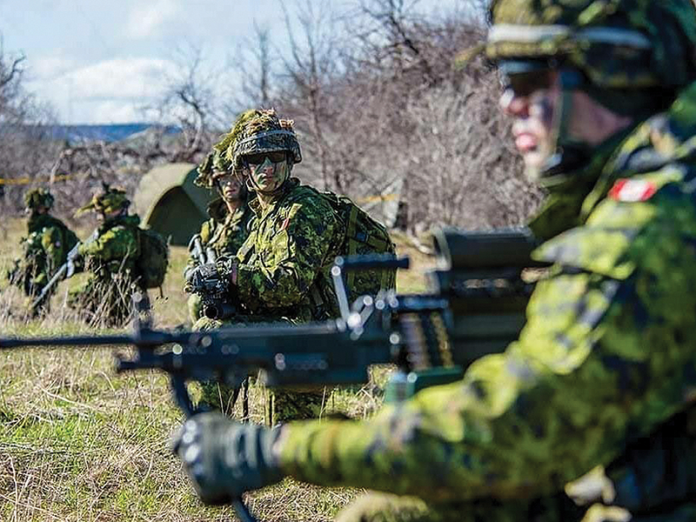As one of the biggest racialized populations in Canada, Filipinos are helping build a diverse and inclusive society.
Filipinos are found in almost every aspect of life in the country, including the military.
In the lead-up to this year’s commemoration of Remembrance Day and Veterans’ Week, Statistics Canada on November 7, 2024 released a report about the Canadian Armed Forces (CAF).
The agency noted that for the first time in 50 years, the 2021 Census collected detailed data about the CAF.
“In the spring of 2021, there were 97,625 Canadians serving in the CAF as members of the Regular Force or Primary Reserve Force, and 461,240 Canadians counted as Veterans,” Statistics Canada reported.
The agency noted that racialized groups “make up an important share of the population currently serving in the military”.
Blacks accounted for 2.8 percent of the military; Chinese, 2.5 percent; South Asian, 2.3 percent; Filipino, 1.4 percent; and Latin American, 1.2 percent.
As for Canada’s veteran population, Blacks make up 1.1 percent; South Asian, 0.8 percent; Chinese, 0.7 percent; Filipino, 0.3 percent; and Latin American, 0.3 percent.
In August 2024, a Canadian warship participated in joint naval exercises with the Philippines and other allies.
The said frigate has a crew of 250 and four of them are of Filipino ancestry.
One of the Filipino sailors of His Majesty’s Canadian Ship (HMCS) Montreal is Petty Officer 2nd class Nicole Fabella, a naval communicator who was born in the Philippine province of Zamboanga.
When HMCS Montreal docked in Manila on August 2, 2024, Fabella expressed her wish to help strengthen ties between Canada and the Philippines.
“I am happy to return to the Philippines as a member of the Royal Canadian Navy,” Fabella said in media reports.
“We are doing important work for the peace and stability in the region,” she also said.
The warship participated in a joint sail with the navies of the Philippines, United States, and Australia from August 7 to August 8 in the South China Sea.
As for trailblazers in the CAF, one Filipino Canadian, who was raised in Brampton, Ontario, serves as a good example.
On June 4, 2017, Lt.-Col. Joseph Nonato assumed command of the Royal Regiment of Canada at the Fort York Armoury in Toronto.
Nonato became the first Filipino Canadian to lead one of the oldest and biggest regiments in the country.
After nearly four years in 2021, Nonato handed over command to his successor.
In June 2019, the Standing Committee on National Defence of the House of Commons released a report titled “Improving Diversity and Inclusion in the Canadian Armed Forces”.
“Canada is a multicultural nation that has long benefitted from the wide range of viewpoints, experiences and traditions of its diverse population” the report stated.
“As the country’s diversity has grown, societal values and behavioural norms have evolved, along with the expectations that Canadians have of the armed forces and its members.”
The report recalled that in 2017, the Government of Canada released “Strong, Secure, Engaged:
Canada’s Defence Policy”.
The plan “both recognizes Canada’s multicultural population as one of the country’s greatest strengths and identifies several personnel modernization initiatives aimed at enhancing diversity, respect and inclusion in the CAF”.
The plan called for, among others, an increase in the share of visible minorities in the military from 6.7 percent to 11.8 percent by 2026.
With 1.4 percent of the Canadian military being made up of Filipinos, the community is not proportionally represented in the CAF.
Based on the 2021 Census, Canadians of Filipino heritage number 960,000, representing 2.6 percent of the entire population.
The Canadian military has been facing a recruitment problem.
In April 2023, the Department of National Defence told CTV News that the CAF has a shortage of 16,000 members.
CTV reported that the CAF at that time had about 100,000 members: 71,500 regular force members and 28,500 reserve members.
By Carlito Pablo



